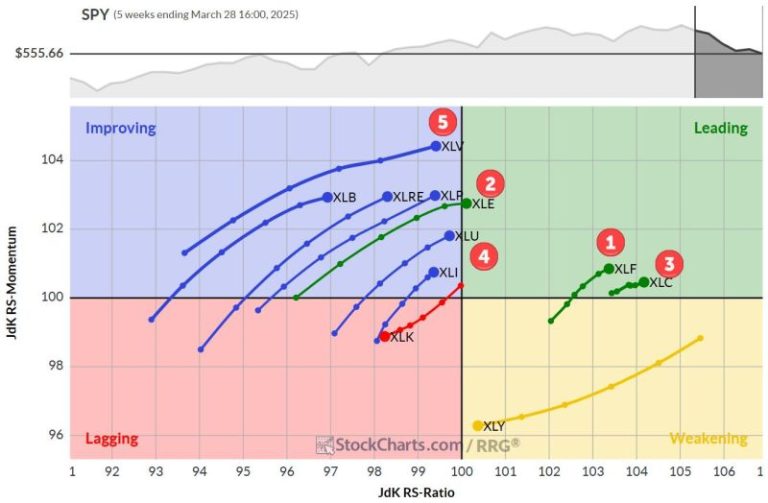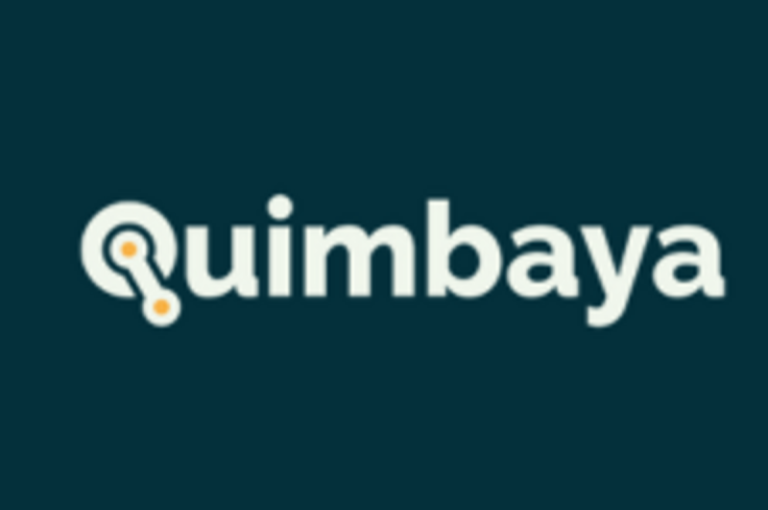Copper demand is climbing quickly in recent years because of the rapid urbanization of the global south as well as the developing energy transition sectors. However, current copper mines are increasing in age and there is a lack of new copper mines to replace them, both due to limited greenfield exploration and long permitting times.
This has put the world’s copper supply in a difficult situation, and experts expect to see supply deficits begin to emerge in 2025.
Resource nationalism is also increasing in recent times, with countries heavily focused on building their own critical minerals supply chains. This caused the Biden administration to list copper as a critical mineral in late 2024, which would allow projects accelerated permits, investment incentives and national security enhancements.
Additionally, after new US President Donald Trump took office in January 2025, Trump issued an executive order that would slash red tape to increase domestic critical mineral production, including copper. The move has caused significant environmental concerns, but it could support US copper companies that have previously struggled to receive permits.
In this article we dive into more than 25 US copper projects in the construction, restarting or permitting phase, based on data from mine database Mining Data Online (MDO). MDO’s database focuses on publicly traded mining companies, so there may be US copper mines being developed by private companies that are not in this list. This article is based on data provided by MDO as of March 2025.
Next US copper mine: Copper mines in the permitting stage
Antler project
Ownership: New World Resources (ASX:NWC,OTC Pink:NWCBF)
State: Arizona
Mine type: Underground
Deposit type: Volcanogenic massive sulfide (VMS)
Commodities: Copper, zinc, lead, silver, gold
As of February 2025, New World Resource’s Antler project is on track to begin construction activities in H2 2025 and complete the permitting process by early 2026. Federally, the only permit remaining is the Mine Plan of Operations, which the Bureau of Land Management stated will be evaluated under an Environmental Assessment. If things proceed as planned, the company will begin shipping concentrate by 2027.
The site hosts numerous targets and a probable copper reserve of 180,000 MT from 11 million MT of ore with an average grade of 1.6 percent copper. The company anticipates a mine life of 12.2 years with an average annual copper production of 36 million pounds and copper equivalent production of 30,100 MT.
Arctic project
Ownership:
50% – Trilogy Metals (NYSE:TMQ)
50% – South32 (ASX:S32,OTC Pink:SHTLF)
State: Alaska
Mine type: Open pit
Deposit type: VMS
Commodities: Copper, zinc, lead, silver, gold
The Arctic project is currently in the feasibility stage. Due to its location, the only significant federal permit required is the 404 wetlands permit from the US Army Corps of Engineers. The remaining permits are issued at the state level.
The site’s indicated copper resource is 2.35 billion pounds from 35.7 million MT of ore with an average grade of 2.98 percent copper. An additional 189 million pounds are inferred from 4.5 million MT of ore with an average grade of 1.92 percent. Once complete, the mine is expected to produce 234,000 MT of copper annually.
Back Forty project
Ownership: Gold Resource (NYSEAMERICAN:GORO)
State: Michigan
Mine type: Open pit and underground
Deposit type: VMS, breccia pipe/stockwork
Commodities: Gold, silver, copper, zinc
Back Forty is planned as two open pits, an underground mine and a processing plant. Once fully permitted, Gold Resource plans for a 21 month construction period before mining commences at its Pinwheel open pit. In 2021, a judge denied a wetlands permit for Back Forty due to its impact on the surrounding area. MDO reports that Gold Resource’s revised mine plan avoids impact on the region’s wetlands, which should support the mine permitting process.
Back Forty will have the capacity to produce 6.8 million pounds of copper concentrate annually. The project hosts an open pit indicated copper resource of 74 million pounds from 9.36 million MT of ore with an average grade of 0.36 percent copper, and an underground indicated copper resource of 47 million pounds from 5.1 million MT with an average grade of 0.41 percent.
Cactus Mine project
Ownership: Arizona Sonoran Copper (TSX:ASCU,OTCQX:ASCUF)
State: Arizona
Mine type: Open pit and underground
Deposit type: Porphyry
Commodities: Copper
Cactus is a brownfield development project in Central Arizona with a 5.5 kilometer mine trend. The site hosts the past-producing Sacaton mine, a mining stockpile and three primary deposits: Cactus East, Cactus West and Parks/Salyer. Arizona Sonoran Copper is working to complete a pre-feasibility study for the second half of 2025.
A Q3 2024 preliminary economic assessment( PEA) outlined a 31 year mine life with on-site production of 86,000 short tons of LME Grade A copper cathode per year. In total, the site has a measured and indicated resource of 7.29 billion pounds from 632.7 million MT of ore at an average grade of 0.576 percent copper.
CK Gold project
Ownership: US Gold (NASDAQ:USAU)
State: Wyoming
Mine type: Open pit
Deposit type: Porphyry, breccia pipe/stockwork
Commodities: Copper, gold, silver
In 2024, the CK Gold project achieved several permitting milestones. In April, US Gold received its mine operating permit, and in November, its subsidiary, Gold King, received its final permit approval from the air quality division of the Wyoming Department of Environmental Quality. These permits were the final hurdles needed before the company began developing the project.
The company plans to produce a copper concentrate that contains gold, copper and silver. CK has a significant copper resource with proven and probable reserves totaling 248 million pounds from 70.4 million MT at an average grade of 0.18 percent copper. US Gold is working towards a feasibility study, and aims to begin construction in late-2025 or 2026 with first concentrate production in 2027 or 2028.
Copper Flat project
Ownership: THEMAC Resources (TSXV:MAC,OTC Pink:MACQF)
State: New Mexico
Mine type: Open pit
Deposit type: Porphyry, breccia pipe/stockwork, hydrothermal
Commodities: Copper, molybdenum, gold, silver
Copper Flat is a brownfield project built on a site that has seen mining dating back to the 1890s, with various companies working to bring the site back online since the 1980s. To date, THEMAC has completed its definitive feasibility and environmental studies and has received several key Federal and State permits. The state mining permit is in the advanced stage.
The site hosts a proven and probable copper reserve of 579.21 million pounds from 113.08 million MT of ore at an average grade of 0.3 percent copper.
Copperwood project
Ownership: Highland Copper (TSXV:HI,OTCQB:HDRSF)
State: Michigan
Mine type: Underground
Deposit type: Sediment-hosted
Commodities: Copper, silver
Copperwood is a fully permitted project and is in active development. Highland spent much of 2024 working to fulfill its obligations to prepare the site as required under the terms of the wetlands and streams permit. Its next development steps are metallurgic testing using ultra-fine flotation technology and community engagement as it moves towards a construction decision.
Copperwood hosts proven and probable reserves of 25.7 million MT of ore at an average grade of 1.45 percent copper for 820 million pounds of contained copper. Highland expects to produce 65 million pounds of saleable copper per year for a total of 675 million pounds over the mine’s 10.3 year life.
Copper World Complex
Ownership: Hudbay Minerals (TSX:HBM,NYSE:HBM)
State: Arizona
Mine type: Open pit
Deposit type: Porphyry, skarn
Commodities: Copper, molybdenum, silver, gold
Copper World is one of the largest copper projects in development in the United States, according to Hudbay. The company is currently in the permitting stage for Phase 1 at Copper World, which will consist of four open pits with an expected mine life of 20 years. The second phase will expand the operation and extend the life of the mine further.
The site has received all necessary state permits to begin construction and operation after it received its air quality permit in January 2025. Hudbay is expecting annual average copper production of 92,000 MT during the first 10 years and 85,000 MT over the 20 year mine life. In year five, it plans to begin copper cathode production to supply the US market.
CuMo project
Ownership: Idaho Copper (OTC Pink:COPR)
State: Idaho
Mine type: Open pit
Deposit type: Porphyry, vein/narrow vein, breccia pipe/stockwork
Commodities: Molybdenum, copper, silver, tungsten, rhenium, sulfuric acid
While Idaho Copper’s focus with CuMo is developing one of the world’s largest molybdenum mines, the company also plans to produce an average of 84 million pounds of copper metal in concentrate per year. CuMo hosts a significant measured and indicated copper resource of 3.81 million pounds.
Idaho Copper is working towards releasing an updated PEA during the first half of 2025. Additionally, the company expects to begin environmental work for its environmental impact statement sometime this year.
Empire project
Ownership:
80% – Phoenix Copper (LSE:PXC,OTCQB:PXCLF)
20% – ExGen Resources (TSXV:EXG,OTC Pink:BXXRF)
State: Idaho
Mine type: Open pit
Deposit type: Skarn, vein/narrow vein, breccia pipe/stockwork
Commodities: Copper, gold, silver
Empire is a brownfield project planned as an open-pit mine atop historic underground workings. Phoenix Copper is developing its mine plan for the Idaho Department of Lands and for federal review by the National Environmental Policy Act. The company is aiming to complete the permitting project in 2025 and begin production in 2026 using on-site, pre-owned milling equipment it purchased in 2024.
Empire’s proven and probable copper reserves are 109.45 million pounds from 10.1 million MT of ore with an average grade of 0.49 percent copper. The mill will produce a copper-gold-silver concentrate and cement copper stream, combining for 89.1 million pounds of payable copper over the nine-year life of mine.
Mason project
Ownership: Hudbay Minerals
State: Nevada
Mine type: Open pit
Deposit type: Porphyry, vein/narrow vein
Commodities: Copper, molybdenum, gold, silver
Planned for a mine life of 27 years, Mason is a significant greenfield copper deposit and one of the largest undeveloped porphyry copper deposits in North America, according to MDO. Hudbay considers Mason a ‘long-term future development asset’ and is working on enhancing project economics through metallurgical studies.
Based on its 2021 PEA, Hudbay expects the mine to produce an average of 112,000 MT of copper concentrate per year and deliver more than 10 million MT over its lifetime.
NorthMet project
Ownership:
50% – Teck (TSX:TECK.A,TECK.B,NYSE:TECK)
50% – Glencore (LSE:GLEN,OTC Pink:GLCNF)
State: Minnesota
Mine type: Open pit
Deposit type: Magmatic
Commodities: Copper, nickel, palladium, gold, platinum, cobalt, silver
The Teck and Glencore NewRange joint venture consists of two deposits: NorthMet and Mesaba. Permitting for NewRange is stalled in part due to concerns with the mine’s tailings plan. In 2025, the companies plan to advance engineering studies at NorthMet and secure updated development permits.
The Trump administration’s executive order to speed approvals of critical minerals projects could potentially help the project clear regulatory hurdles. If it is fully permitted, NorthMet is expected to deliver an average of 60 million pounds of copper concentrate per year over a 20 year mine life.
Palmer project
Ownership: American Pacific Mining (CSE:USGD,OTCQX:USGDF)
State: Alaska
Mine type: Underground
Deposit type: VMS
Commodities: Copper, zinc, silver, gold, barite, lead
American Pacific Mining is assessing its Palmer project through its five-year plan that ends in 2028. In 2024, work included environmental and permitting activities, a variety of studies in preparation for future feasibility plans and drilling to expand the mineral resource.
As of 2018, the site hosts an indicated copper resource of 154 million pounds from 4.68 million MT of ore at an average copper grade of 1.49 percent, and an inferred copper resource of 124 million pounds from 9.6 million MT of ore at an average grade of 0.59 percent.
Pebble project
Ownership: Northern Dynasty Minerals (TSX:NDM,NYSE:NAK)
State: Alaska
Mine type: Open pit
Deposit type: Porphyry
Commodities: Copper, molybdenum, gold, silver, rhenium
According to MDO, Pebble is the world’s largest known undeveloped resource of copper as well as gold. The project has been stalled since November 2020, when the US Army Corps of Engineers (USACE) rejected its permit applications due to environmental concerns. Since then, Northern Dynasty has been suing to overturn the rejection.
In February 2025, court proceedings were suspended for 90 days at the request of the Environmental Protection Agency (EPA) and the USACE. This followed the confirmation of a new EPA administrator and Trump’s executive order supporting critical mineral projects. However, it still remains to be seen whether the Trump administration will support Pebble this time around, as the previous rejection was made during his first term.
Pebble is planned to produce an estimated average of 320 million pounds of copper concentrate annually, from a measured and indicated resource base of 52.99 billion pounds of copper.
Pumpkin Hollow
Ownership: Kinterra Capital
State: Nevada
Mine type: Open pit
Deposit type: Skarn, breccia pipe/stockwork, iron oxide copper-gold (IOCG)
Commodities: Copper, gold, silver
The Pumpkin Hollow project hosts a fully permitted open pit project and a fully permitted and constructed underground mine. Production and development were suspended at the operations after its previous owner Nevada Copper filed for Chapter 11 bankruptcy in June 2024. That October, Pumpkin Hollow was acquired for US$128 million by an affiliate company of private equity firm Kinterra Capital, which plans to advance the assets.
Proven and probable copper reserves at Pumpkin Hollow’s open pit project total 3.59 billion pounds from 385.7 million MT of ore with an average grade of 0.47 percent copper. The open pit is expected to produce an annual average of 163 million pounds of payable copper. Additionally, the underground mine is projected to produce 50 million pounds of payable copper annually once it is restarted.
Resolution project
Ownership:
55% – Rio Tinto (ASX:RIO,NYSE:RIO,LSE:RIO)
45% – BHP Group (ASX:BHP,NYSE:BHP,LSE:BHP)
State: Arizona
Mine type: Underground
Deposit type: Porphyry
Commodities: Copper, molybdenum, silver
The Resolution project has the potential to supply 25 percent of the total US copper demand, with planned production of 40 billion pounds of copper over its 40 year mine life.
Permitting for the project has been underway for over a decade, and the US Forest Service published and then rescinded the project’s final environmental impact statement in early 2021. The local Apache Tribe has taken legal action to stop the proposed mine as the deposit sits under a site of religious importance.
According to BHP’s 2024 annual report, the Resolution joint venture and the US Forest Service are focused on further consultation with Native American Tribes to mitigate harm to the region. The agency has said there is currently no timeline for republication of the final environmental impact statement. After Trump took office in January, Rio Tinto’s CEO said he is optimistic the president will grant Resolution’s final permits.
Tamarack North project
Ownership:
51% – Talon Metals (TSX:TLO,OTC Pink:TLOFF)
49% – Rio Tinto
State: Minnesota
Mine type: Underground
Deposit type: Porphyry
Commodities: Nickel, copper, cobalt, platinum, palladium, gold
Tamarack is one of only three high-grade nickel sulfide deposits discovered in this century. Due to its significance, the US Department of Energy has selected it to receive a US$114.8 million grant for the construction of a battery mineral processing facility.
Despite its nickel primary status, the project will produce 24,000 MT of copper concentrate annually as a by-product material from an indicated resource of 8.56 million MT of ore grading 0.92 percent copper. Talon currently plans to begin construction in 2026, with production beginning in late 2027.
Twin Metals Minnesota project
Ownership: Antofagasta (LSE:ANTO,OTC Pink:ANFGF)
State: Minnesota
Mine type: Underground
Deposit type: Magmatic
Commodities: Copper, nickel, platinum, palladium, gold, silver, cobalt, lead
Twin Metals Minnesota’s development is currently on hold after hitting multiple roadblocks, including the rejection of its mine plan and cancelling of two federal mining leases due to concerns tailings from the mine will impact the Superior National Forest and Boundary Waters Canoe Area.
In 2022, Antofagasta’s subsidiary Twin Metals engaged in litigation against the US government over the actions, and in September 2023, the district court dismissed the company’s claims, siding with the government. Twin Metals filed an appeal in November of that year.
If approved, the mine is expected to produce 158,000 MT of copper annually. The company said it is studying the possible impact of Trump’s executive order.
Van Dyke project
Ownership: Copper Fox Metals (TSXV:CUU,OTCQX:CPFXF)
State: Arizona
Mine type: In-situ
Deposit type: Porphyry, breccia pipe/stockwork, vein/narrow vein
Commodities: Copper
The Van Dyke project covers a project area of 531.5 hectares and hosts historical mine workings, which produced 11.5 million pounds of copper between 1929 and 1945 and an additional 5 million pounds between 1988 and 1989.
In a 2020 PEA, Copper Fox reported an after-tax net present value of US$644.7 million, an internal rate of return of 43.4 percent and a payback period of 2.1 years. The company forecasts a mine life of 17 years and annual average copper production of 85 million pounds. Copper Fox is currently advancing the project towards a pre-feasibility study.
White Pine North project
Ownership:
66% – Kinterra Capital
34% – Highland Copper
State: Michigan
Mine type: Underground
Deposit type: Sediment-hosted
Commodities: Copper, silver
Kinterra Capital is the operator of White Pine North as of 2023, when Highland sold it 66 percent of the project. In June 2024, the company initiated an environmental baseline study for White Pine North that would be key to supporting its ongoing permitting operations. Using room-and-pillar mining, the partners plan to use begin production at the first panel in 2027 and expect a four-year ramp-up to full plant throughput.
The project hosts a measured and indicated copper resource of 3.5 billion pounds from 133.4 MT of ore with an average grade of 1.05 percent copper and an additional inferred copper resource of 2.18 billion pounds from 97.2 MT of ore with an average grade of 1.03 percent. Average annual payable copper metal production is projected at 94 million pounds.










